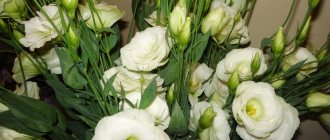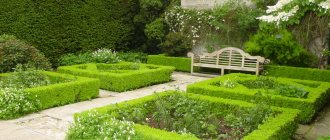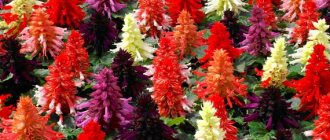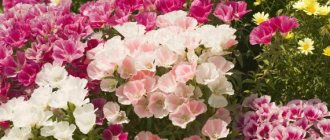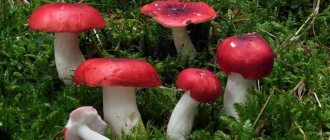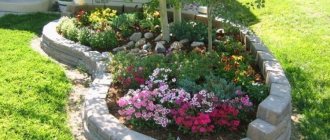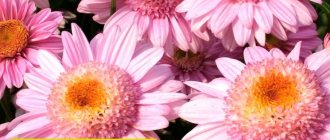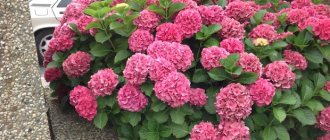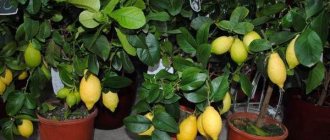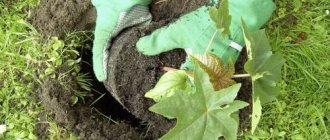- 125528
- landing
Herbaceous biennial plants are monocarpic (from the Greek words monos - one, karpos - fruit), producing flowers or fruits once in a lifetime. These also include annuals and, as an exception, several perennials that die after fruiting: some types of bamboos, American agave.
The perennial American agave lives 10-15 years, but blooms once in its life and then dies.
note
Annual plants go through their entire life cycle, from seed planted in the soil to the formation of flowers and fruits, in one growing season.
Perennial herbaceous plants retain their root system for several growing seasons, while their aboveground part dies in winter.
Biennials derive their origin from perennials, forced to adapt to the conditions of arid or cold climates. In the first year, a leaf rosette is formed at the surface of the earth; in the second year, shoot growth occurs, flowering and the formation of fruits and seeds.
In the first year, celery develops a root (or a large, rounded root crop) with a large rosette of leaves. The next year, celery forms a stem up to 1 m high with small umbrellas of inflorescences.
What are biennial plants?
Biennials are plants whose life cycle lasts from 12 to 24 months . Typically, these include vegetables and flowers.
There are few biennial flowers and plants in nature
Annuals develop and wither in one season, that is, they manage to perform all their functions before the onset of winter. Biennial crops, on the contrary, overwinter in the ground and complete their life cycle the next year after planting .
Perennials include crops that bloom or bear fruit over several seasons . Most often, this type includes trees or shrubs.
Forget-me-not - blue forb
7. Garden forget-me-not is a very unpretentious plant; it can even be moved to another place while it is blooming. Blooms profusely in shade and sun, but prefers partial shade. Blooms in late spring. It tolerates drought and frosts down to minus 5°C. Forget-me-not blooms for a long time - more than a month. In landscape design, it is good for creating spring flower beds; it is planted with lily of the valley in the shade of sparse trees, shrubs, and also between daffodils and tulips. Densely planted forget-me-nots will create a corner of wildlife between the trees. Its flowers look beautiful in rock gardens, borders, and mixborders. It propagates by self-seeding, which allows you to maintain already created compositions with perennials in order without updating.
Life cycle features
The life cycle of biennial crops is as follows:
- In the first year after planting, such crops grow a root system, short stem and leaves;
- With the onset of cold weather, the green part withers and falls to the ground. In this case, the rhizome remains to overwinter in the ground or in a special storage facility. In order for the plant to bloom the next season, it must be exposed to cold temperatures;
- In the spring, a year after planting, biennials develop a powerful and taller stem, larger leaves, and begin flowering or the formation of fruits (tubers);
- After flowering or fruiting, seeds ripen on the plants, thanks to which the cycle can begin again.
The list of biennial crops is much smaller than that of annual or perennial crops. To some extent, they have a special, unique life cycle.
The most popular biennial plants
Biennial plants are conventionally divided into flowering and fruit crops.
Blooming
Flowering biennials include:
Turkish clove
The most popular are the Dutch varieties of these flowers; they are bright, velvety and tall. When planting them, it should be taken into account that they prefer fertile soils and places saturated with sunlight . Intolerant to large amounts of moisture. With their help you can create spectacular flower beds and front gardens. The downside of Turkish cloves is their low frost resistance.
Medium bell
The bushes of this flower reach a height of 50-90 centimeters . The flower stalks are double, most often colored blue, purple, pink or white. Bells need to be planted in sunny places; support is required. When watering, water is poured strictly to the roots.
Daisy
This crop blooms in the spring, so it belongs to the group of early species. It grows up to 10 centimeters in height, simultaneously producing 20-30 bright inflorescences of white, pink, red or burgundy. This species loves sunlight, loose and nutritious soils, and tolerates severe frosts well.
Forget-me-not
This plant blooms in early spring and prefers cool, shady places. It reaches a height of 20 centimeters, the flowers are painted in a bright blue color . Pairs best with tulips, daffodils or pansies.
Viola or pansy
In garden cultivation, artificially bred hybrid varieties are used. Pansies produce abundant blooms of varied colors.
Fruit
Fruit biennials include the following crops::
White cabbage
The stem of this plant (stalk) in the first year has an erect shape; it is quite short, fleshy and thick. The basal leaves form a dense rosette - it shakes. In the second year, the stalk takes on a cylindrical shape, and the large, fleshy leaves become lyre-shaped. The top layer of the head of cabbage is predominantly green, all other leaves are painted white . Cabbage grows throughout Russia, tolerates unfavorable climates and is easy to care for.
Leek
This garden crop is very different from other representatives of its species. The leaves are long and narrow, in appearance they resemble arrows of garlic. A false stem forms in the lower part, which is a white stalk; sometimes it thickens and becomes similar to an onion head. Leeks are grown using seedlings, which begin to be prepared in February .
In terms of its care, the plant is quite unpretentious and does not require special attention. A distinctive feature will be the ability to accumulate useful microelements during storage, while other plants lose them.
Biennial flowers - photos, types, sowing dates.
Biennial plants
differ from annual or perennial flowers primarily in their development cycle and flowering period. After germination, biennial plants grow leaves and develop a root system all summer, and their lush flowering can only be seen next year. Most biennials die completely or partially after flowering and seed ripening; in the third year they bloom weakly and the flowers become smaller. Therefore, it is recommended to remove biennial flower species after flowering in the second year of life, and re-sow them every year.
Among the biennial plants there are very beautiful flowers
To admire them, flower growers are ready to grow them for two years.
It is better to sow biennial plants in open ground or in special nurseries or greenhouses. The most popular biennial flowers are pansies, Turkish carnations, daisies, hollyhocks, foxgloves, forget-me-nots, and bluebells.
If the flowers have medium-sized or large seeds, they can be sown in the beds, sprinkled with soil and regularly moistened. Flowers with small seeds are best sown in special greenhouses or boxes. Small seeds are scattered over the surface of the moistened soil, do not fall asleep on top and do not water. To maintain moisture longer, the crops are covered with glass and moistened by spraying. The seedlings from small seeds are small so that they do not disappear under the sun's rays; until the real leaves appear, they are protected from the bright sun.
The seedlings should develop in the nursery for 3-4 weeks, then they are planted in flower beds and flower beds in places where they will bloom next year. Most biennial plants tolerate replanting well at an early age. It is better to pick in August, but no later than September, so that the plants have time to take root before the cold snaps. For wintering, biennial plants are covered with dry leaves and covered with humus around them. In early spring, the shelter is removed so that the soil warms up faster; at the same time, the soil around the plants should be loosened and fertilized with complex fertilizer.
Flowering biennial plants:
Pansy flowers or Wittrock violet
captivates with its bright, pretty flowers. A large variety of varieties allows you to choose pansy flowers with different colors, patterns, sizes and shapes for sowing. Thanks to strong branching, even one miniature plant blooms very luxuriantly; new buds will form from the leaf axils from early spring to autumn.
You can grow pansies as annual flowers if you sow the seeds for seedlings in January - February, plant the plants in the ground in April, they will bloom in May - June. Many people prefer to grow pansies as a biennial crop so as not to bother with seedlings. Then the seeds are sowed in June - July, choosing a cool, shady place. In August - September, young plants are transplanted into sunny flowerbeds, placing them at a distance of 20 cm. Wittrock violet plants are cold-resistant; they do not need to be covered for the winter. In the spring, after the snow melts, pansies will begin to bloom simultaneously with the first spring flowers.
Daisies
are perennial plants, but they bloom most decoratively only in the second year of life in the spring. Daisies have been grown by flower growers for several centuries; during this time, a lot of varieties of these flowers have appeared with different colors and shapes, from simple to densely double. As low, miniature flowers, daisies will look beautiful in a group on the lawn or in a flower garden in the foreground.
Daisy seeds are sown at the end of June - in July. The seeds of these flowers are small, so it is better to sow them in a box or nursery, and a month after germination, transplant the seedlings to a permanent place in the flower beds. In the first year, daisies develop a rosette of leaves that overwinters under the snow. Daisies bloom the following year in early spring and decorate flower beds from April to July. Daisies can self-sow; if the wilted inflorescences are not removed, the seeds will ripen and, falling into the ground, will soon germinate. Sprouted plants can be planted at the end of summer; next year they will also bloom.
About biennial plants
Herbaceous biennial plants are monocarpic (from the Greek words monos - one, karpos - fruit), producing flowers or fruits once in a lifetime. These also include annuals and, as an exception, several perennials that die after fruiting: some types of bamboos, American agave.
The perennial American agave lives 10-15 years, but blooms once in its life and then dies.
Annual plants go through their entire life cycle, from seed planted in the soil to the formation of flowers and fruits, in one growing season.
Perennial herbaceous plants retain their root system for several growing seasons, while their aboveground part dies in winter.
Biennials derive their origin from perennials, forced to adapt to the conditions of arid or cold climates. In the first year, a leaf rosette is formed at the surface of the earth; in the second year, shoot growth occurs, flowering and the formation of fruits and seeds.
In the first year, celery develops a root (or a large, rounded root crop) with a large rosette of leaves. The next year, celery forms a stem up to 1 m high with small umbrellas of inflorescences.
Representatives of biennials
There are especially many biennial cultivated plants in the Cruciferous family, these include:
- carrot;
- kohlrabi;
- beet;
- radish.
- cabbage, cabbage, cabbage;
Under favorable conditions, white cabbage forms a head of cabbage in the first year, and blooms and produces seeds in the second year.
Turnip (Brassica rapa) is a biennial plant that produces a rosette of leaves and roots in the first year and flowers in the second year.
- turnips (or garden turnips);
In the first year of life, turnips form a root and a rosette of leaves, and in the second - flowers and seeds.
Among garden flowers there are many representatives of biennials that achieve decorative value in the second year of life:
- Turkish cloves;
- medium bell;
- digitalis;
- tricolor violet;
- forget-me-not.
- daisy;
With the method of propagation by seedlings, daisies bloom only the next year
Features of the life cycle of biennials
The life cycle of biennials occurs over two growing seasons. So, in the first year, a biennial carrot plant forms a root crop, then in the winter the above-ground part dies, and the next spring the carrot shoots, blooms, forms seeds, and then dies. In the first season, vegetative organs are formed, the next year generative organs are formed, which include flowers and fruits.
For flowering and fruiting, biennials need a winter dormancy period.
Watershed - diversity in all its forms
8.An excellent addition would be a two-year-old aquilegia, which looks great against the backdrop of traditional plants. Its luxurious flowers will decorate any flower bed and although they are quite small in size, the variety of colors, shapes and fairly abundant flowering will delight even the discerning gardener.
To enjoy the flowering of biennial plants, you should grow seedlings in advance.
This is not always a simple and rewarding task, so to create a delightful composition, you can immediately buy seedlings and enjoy flowering the same year. blog comments powered by Disqus
Biennial flowers - main growing features
A distinctive feature of biennial flowers is that in the first year after sowing these flowers, only a rosette of leaves is formed, and only in the second year does flowering begin.
After flowering, the plant's life cycle ends and it dies.
The most popular biennial flowers for the garden - photos of biennials
The main list of flowers with a two-year growing season includes:
- Medium bell
Medium bell
- Rose stock
Stock-rose
- Foxglove purpurea
Foxglove purpurea
- Perennial daisies
Perennial daisies
- Forest forget-me-nots
Forest forget-me-nots
- Pansies
Pansies
- Hesperis female or night violet (evening violet)
night violet
- Turkish and bearded carnation
Turkish cloves
According to the flowering period, biennial flowers are divided into two types:
- Spring (Viola, Daisy, Forget-me-not)
- Summer (Bluebell, Carnation, Foxglove, Stock-rose, Hesperis)
According to plant growth:
- Low-growing (viola, forget-me-not, daisy)
- Tall (foxglove, hollyhock, bluebell)
How do biennial flowers reproduce?
Biennials can be propagated by seeds, cuttings, dividing the bush, and some biennials propagate by self-sowing.
Where is the best place to plant biennial flowers?
Biennial flowers are not demanding on soil and lighting; they can even be planted in partial shade and under the canopy of trees.
They can be planted in mixborders in small groups; low-growing biennials are planted in containers, borders, together with bulbous flowers.
Tall ones (foxglove) are closer to houses and fences, in the background of flower beds, be sure to tie them up.
How are biennial flowers grown?
Biennials can be planted in two ways: through seedlings and directly into open ground.
Stock rose
Rose stock seeds are sown at the beginning of summer immediately in a permanent place. Since the plants are tall (up to 2 m), they require a space of 40-50 cm per plant. It is better to plant in the back row of the flower bed.
Flowers come in different colors, single or double. They prefer loose soils and sunny places.
AllaAuthor of the article
Did you like the article?
Share with your friends:
Examples of annual, biennial and perennial plants
First let's go into the garden. What annuals grow here? First of all - potatoes, radishes, tomatoes, peppers (sweet and bitter), cucumber, savoy and Chinese cabbage, watermelon, melon, pumpkin (pumpkin itself and its “relatives” - crookneck, zucchini, squash), eggplant, beans, peas, soybeans, corn, sunflower, physalis, rapeseed, borage, anise, basil, hyssop, coriander, dill, fennel, savory, chervil, purslane, all kinds of salads (including watercress), spinach, mustard greens, marjoram. For all of these plants, life begins with sowing seeds in the spring and ends in the fall with harvesting in the form of tubers, root crops, and seeds, which give rise to life for their own kind in the next season.
Examples of biennial plants: cabbage (red, white, Brussels sprouts, kale, kohlrabi). From onions - leeks and shallots. Root biennial plants - examples: carrots, rutabaga, turnips, radishes (white and black), beets, parsley, celery, parsnips. Leafy ones - parsley and celery - are also two-year-olds. Little-known but valuable biennial plants grown, examples: Swiss chard, chicory, endive lettuce, scorzonera, oat root, shallots. Cumin is one of the aromatic biennials.
Perennials are Jerusalem artichoke, sorrel, the onion family (the well-known trumpet, the little-known slime, multi-tiered and chives), rhubarb, horseradish, artichoke, asparagus, stachys. Spicy aromatics: tarragon (aka tarragon), lovage, thyme, lemon balm, mint.
Flowering biennial plants
Below are examples of those biennials that are loved by many and therefore well known.
Turkish carnations are the most beautiful Dutch varieties of these flowers - bright, large, velvety and tall. They love a sunny place and rich humus. Intolerant of moisture stagnation. Effective in large lush groups. They should be protected from freezing by covering them with a layer of sawdust before winter.
The middle bell is a flowering plant of extraordinary, enchanting beauty. Pyramid-shaped bushes 0.5 - 0.9 m high, with large double flowers of blue, purple, pink and white colors. Loves the sun, needs to be watered at the root. Afraid of winds - needs support.
Daisy is a beauty of spring, a light-loving and cold-resistant baby (up to 10 cm in height). When sown early, it will try to bloom in the first summer, but it blooms profusely after wintering - it produces 20 - 30 inflorescences at a time. Colors: white, pink, red, burgundy. Prefers loose, nutritious soil.
Forget-me-not is an unpretentious blue-eyed early spring miracle. Height 20 cm. Good next to tulips, daffodils, pansies, primrose. Rich blooms in a cool location with lacy shade. Decorates the garden and bouquets.
Viola - pansy. Without them, a flower garden is boring. Blooming profusely, curious, of all kinds of colors. Selection and hybridization did their job, turning a small meadow flower into a real miracle.
Daisies - holy simplicity
3. Daisy is a perennial plant, but after the first flowering it becomes smaller and the flowers partially lose their decorative effect. Therefore, it is usually grown as a two-year-old. This is a dwarf flower 8 - 20 cm high with simple and double inflorescences of various shades, starting with touching white and ending with red. The daisy feels comfortable in light and partial shade. It tolerates winter without complications and responds positively to fertilizing with organic fertilizers. The daisy is perfect for decorating low-growing flower beds, creating ridges and borders. Dwarf varieties are used for carpet plantings and grown in boxes and containers.
